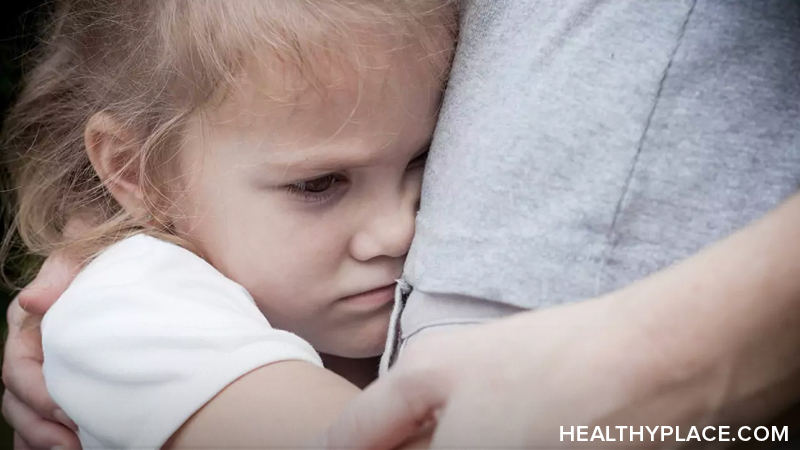List of All Child Behavior Disorders

Are you looking for a list of child behavior disorders? You’ll find a comprehensive list of child behavior disorders below; but first, let’s briefly examine what they are.
Child behavior disorders involve extreme, problematic behaviors that are disruptive at best and aggressive, even harmful, at worst. To be considered a diagnosable disorder, a child’s behavior must be more disorderly and last longer (usually six months or more) than the misbehavior, tantrums, and “naughty” behavior that all kids engage in from time to time. Often, discipline methods that are successful with other kids don’t work at all for a child with a behavior disorder.
If you’re struggling with a child who has behavior problems like lying, stealing, threatening, harming themselves or others, relentless arguing, and strong temper tantrums, this comprehensive list of child behavior disorders could be helpful in sorting out what your child is experiencing and communicating your concerns to your child’s doctor. The list is divided into categories. Disorders in the first category are considered behavior disorders by the American Psychiatric Association’s DSM-5, their official manual of mental disorders. Others have a disruptive behavior component but don’t predominantly relate to behavior.
Regardless of how they’re categorized, these child behavior disorders are tough to deal with. Let this list be your guide in learning about your child’s intense, negative behavior.
Disruptive, Impulse-Control, and Conduct Disorders
What all behavior disorders have in common are problems in emotional and/or behavioral self-control. However, disruptive, impulse-control, and conduct disorders violate the rights of others through aggression, destruction of property, etc. These include oppositional defiant disorder, intermittent explosive disorder, and conduct disorder.
Oppositional defiant disorder (ODD). ODD involves anger and irritability. Children with ODD are argumentative, defiant, and vindictive but are not willfully aggressive toward others or physically harmful.
Intermittent explosive disorder. A child with this behavior disorder is impulsive and aggressive, as seen in explosive tantrums, fights, and verbal arguments. Children come close to, but stop short of, causing physical harm to someone or destroying property.
Conduct disorder. Conduct disorder is considered by many to be the most frightening of all child behavior disorders. Children with this illness are aggressive and potentially harmful to others, even using weapons to cause physical harm. They’re destructive and deceitful, and they violate rules and do what they want, even before the teen years.
Neurodevelopmental Disorders
Attention-deficit/hyperactivity disorder (ADHD). Because of the hyperactivity and impulsivity component of ADHD, kids can seem intentionally disruptive and oppositional. However, the problem isn’t behavioral but instead is neurological, impacting the brain’s executive functioning.
Autism spectrum disorder (ASD). Autism is not a behavior disorder, but, depending on the child, it can be disruptive and have a behavioral component. This typically involves outbursts or resistance that aligns with the child’s symptoms.
Specific learning disorder. There are different types of learning disorders. Rarely does a learning problem have a disruptive behavior component. Like the other neurodevelopmental disorders here, learning disorders can cause frustration, causing irritability, general acting out, and provoking arguments with others. Sometimes, children want to hide their learning struggles, so they misbehave as a cover-up.
Anxiety and Mood Disorders
Generalized, social, and other anxiety disorders. Children with one or more anxiety disorders often feel in distress, and when they’re in a situation that elevates their anxiety, they may become disruptive (throwing tantrums and having meltdowns) and oppositional. The purpose is not to misbehave but to avoid or escape the stressful situation.
Disruptive mood dysregulation disorder (DMDD). Kids with DMDD are almost always irritable and angry. They also have frequent temper outbursts involving verbal rage and physical aggression.
Bipolar disorder. While this disorder involving disruptive mood swings from depression to mania can be diagnosed in children, it is done so only with caution. In kids, components of the manic side of bipolar disorder look like many other behavior disorders: hyperactivity, aggression, impulsiveness, and socially inappropriate behavior.
A child with a behavior disorder causes significant, ongoing, problems for parents, siblings. teachers, and anyone else in the child’s life. These behaviors extend far past childhood problem behaviors. Seeking professional help for your child, yourself, and your family is important in managing child behavior disorders.
APA Reference
Peterson, T.
(2022, January 11). List of All Child Behavior Disorders, HealthyPlace. Retrieved
on 2026, January 12 from https://www.healthyplace.com/parenting/behavior-disorders/list-of-all-child-behavior-disorders



